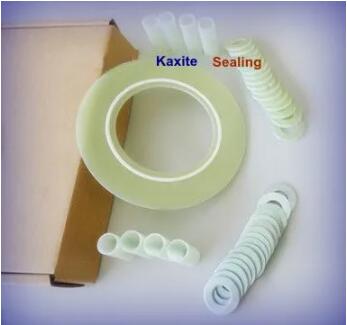How to Choose the Right Flange Insulation Gasket Set for Your Application
2024-08-28
Selecting the right flange insulation gasket set is crucial for ensuring the integrity and longevity of your piping system. With various types and materials available, the choice can be overwhelming. This blog will guide you through the key factors to consider when choosing a flange insulation gasket set for your specific application.
Assessing Your Application Needs
The first step in choosing the right flange insulation gasket set is to assess the specific needs of your application. Consider the following factors:
1. Operating Environment: Determine the temperature, pressure, and chemical exposure that the gasket set will need to withstand. High-temperature environments or those involving aggressive chemicals will require gasket sets made from specialized materials.
2. Type of Flange: The type of flange used in your system will influence the choice of gasket. For example, ring-type flanges will require a ring-type gasket, while full-face gaskets are used with flat-face flanges.
3. Electrical Isolation Requirements: Evaluate the level of electrical isolation needed. If complete isolation is critical, a full-face gasket set (Type E) may be necessary. For less critical applications, a ring-type gasket (Type F) may suffice.
4. Pressure Ratings: Ensure that the gasket set can handle the pressure levels of your system. High-pressure applications require gaskets made from materials that can maintain their integrity under stress.
Choosing the Right Material
The material of the flange insulation gasket set is key to its performance. Here’s a breakdown of common materials and their applications:
1. Phenolic Resin: Ideal for general-purpose applications, phenolic resin offers good insulation properties and is cost-effective. However, it may not be suitable for high-temperature or chemically aggressive environments.
2. Glass-Reinforced Epoxy: This material is stronger and more durable than phenolic resin, making it suitable for high-pressure and high-temperature applications. It also provides excellent chemical resistance.
3. PTFE (Teflon): PTFE is highly resistant to chemicals and can operate in a wide range of temperatures. It’s a good choice for applications involving aggressive chemicals or where a low coefficient of friction is desired.
4. Neoprene or Nitrile Rubber: These elastomeric materials are used in applications where flexibility and vibration absorption are important. They also offer good chemical resistance.
Understanding Gasket Types
Selecting the right type of gasket within the set is equally important. Here’s a quick guide:
- Type E (Full-Face Gasket): Best for complete electrical isolation and where the entire flange face needs to be covered.
- Type F (Ring-Type Gasket): Suitable for raised-face flanges and situations where space or budget constraints exist.
- Type D (O-Ring Gasket): Ideal for high-pressure applications, particularly in ring-type joint flanges.
Installation Considerations
Proper installation of flange insulation gasket sets is crucial for ensuring their effectiveness. Here are some tips:
1. Surface Preparation: Ensure that the flange surfaces are clean and free from debris or corrosion. Any imperfections can affect the gasket’s sealing ability.
2. Bolt Tightening: Use the correct bolt torque to avoid over-tightening or under-tightening, which can lead to leaks or gasket failure. Follow the manufacturer's guidelines for the specific gasket set.
3. Alignment: Ensure that the flanges are properly aligned before installing the gasket. Misalignment can cause uneven pressure distribution and lead to leaks.
Conclusion
Choosing the right flange insulation gasket set involves careful consideration of your application’s environment, flange type, and insulation needs. By selecting the appropriate material and gasket type, and ensuring proper installation, you can protect your piping system from corrosion and electrical issues, thereby enhancing its longevity and reliability.



